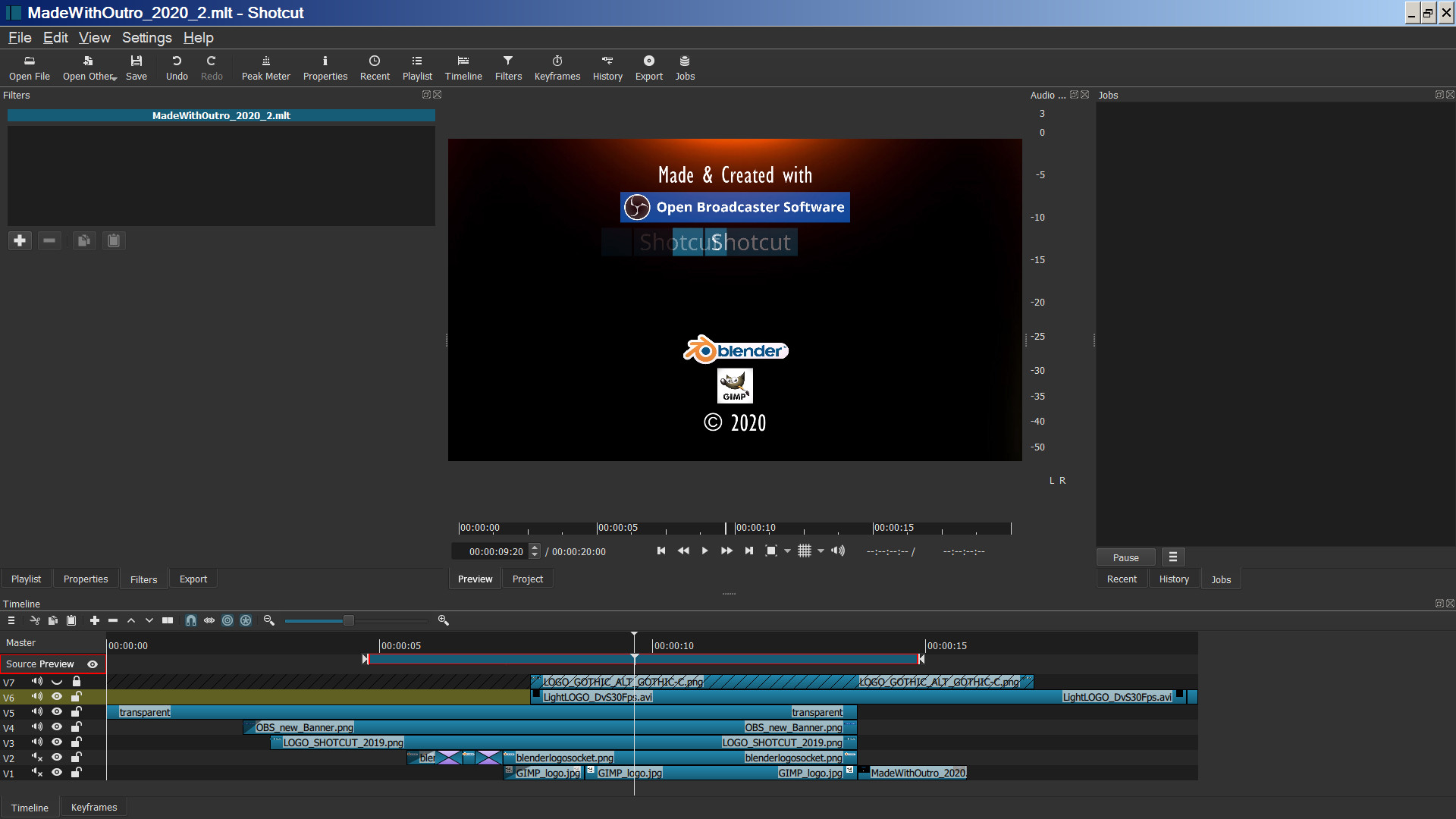
- Shotcut editing preview software#
- Shotcut editing preview windows 7#
- Shotcut editing preview professional#
- Shotcut editing preview download#
OpenShot is capable of saving your videos in all popular file formats including HEVC 4K, H.264, VP8, AVI, and DVD. However, this is not a biggie when considering so many effects and elements prepared by OpenShot, over 400 transition effects, and 40 vector title templates.
Shotcut editing preview download#
The download pack of OpenShot comes is around 130MB which is twice that of Shotcut.
Shotcut editing preview software#
Some standout features of this community-driven software are the basic 3D animation tools for adding flying text, lens flares, or snow to the captured frames as well as the chroma key function.
Shotcut editing preview professional#
You can bank on this beginner-oriented video editing tool to help you in scaling, resizing, rotating, and trimming clips apart from mixing audio for highly professional results. OpenShot is meant for Mac, Windows, and Linux users who are on the lookout for an easy and quick way of learning the art of video editing. Shotcut, which is the best open source video editor?" Now, let's take a look at the pros and cons of each freeware, and then make a comparison to see which one will win the battle. So the big question on many beginners' minds is " OpenShot vs. Both are free of charge, well-supported community, mild-learning curve, to name a few. These two open source video editing programs have many similarities. And the best part is, with Shotcut or OpenShot, everyone can get a hang of the entire video editing drill without investing in any paid video editor. This comes in as a blessing for everyone who is trying to learn the art of video editing for reaching out to customers or enhancing their online presence.
Shotcut editing preview windows 7#
PC: Windows 7 through 10 (32- or 64-bit).The software makes it significantly easier to add transitions and effects, and it offers better tools for keeping your project files organized. However, if you’re using a Mac or Windows computer, we think Hitfilm Express 15 is a better free video editor. Since Shotcut is free, there’s no downside to giving it a try. That dramatically increases the time it takes to color grade a whole video project.

You also can’t apply filters onto your timeline, but rather only onto individual clips. It’s essentially impossible to organize source clips within the software, which makes it harder to get a new project off the ground. However, Shotcut 20 does fall short in a few places that matter a lot. We especially liked the timeline builder, which is simple to use and features helpful tools like a ripple editor. The platform’s layout and general design mimics what we’d expect from a top-tier paid editor. We were impressed with how easy Shotcut is to use, considering it’s a free, open-source video editor. Shotcut offers a handful of preconfigured export options or the ability to customize your video export (Image credit: Shotcut) Shotcut 20: Should I buy it?

This makes it surprisingly complicated to fade slowly to black, then transition to a new clip with no fade. However, you can’t control the speed of the transition using keyframes. There are 24 different options, which is more than most creators will ever need.

You can only change the style of your transition after it’s been created, using Shotcut’s Properties window. The result is that it’s somewhat difficult to control how long your transition is. Instead of treating transitions like clips that you can drag around the timeline, Shotcut generates transitions when you drag one clip over another in an existing track. The process for adding transitions in Shotcut 20 was somewhat odd, especially if you’re coming from another video editor. It’s not a huge deal, but it does add an extra step into what should be a seamless part of your workflow. You have to manually create a new track before adding new clips. The main disappointment we had with the timeline builder is that it doesn’t enable you to create new tracks just by dragging and dropping clips from your source folder. Shotcut’s timeline builder includes a snap-to option and a ripple edit tool (Image credit: Shotcut)


 0 kommentar(er)
0 kommentar(er)
